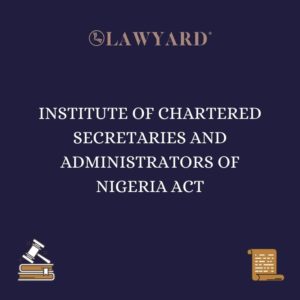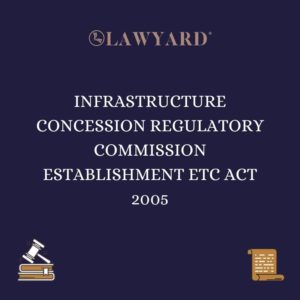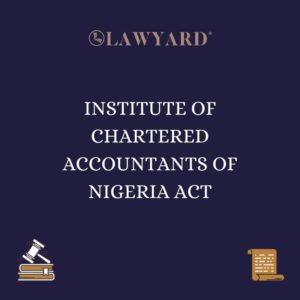Constructive Dismissal in Employment Law
Lawyard is a legal media and services platform that provides…
Sometimes, an employee that is deserving of summary dismissal is given a soft landing by being asked to resign instead. This may be for a variety of reasons, such as to save the employee the unfavorable consequences of a dismissal (as against voluntary resignation). What if such employee later sues the employer for ‘constructive dismissal’, and claims that he/she was hounded out of the job by being ‘asked’ to resign?
In employment law, constructive dismissal (also called constructive discharge or constructive termination) occurs when an employee resigns as a result of the employer creating a hostile work environment. Since the resignation was not truly voluntary, it is in effect, a termination that might entitle the employee to remedy.
A Case Study of Mrs. Vivien Folayemi Asana vs First Bank of Nigeria Ltd
The doctrine of constructive dismissal/discharge has been applied by Nigerian courts, with approval, in several cases, such as the case of Mrs Vivien Folayemi Asana v. First Bank of Nigeria Ltd (SUIT NO. NICN/LA/184/2016) the judgment of which was delivered on 09 October 2018. In the case, the claimant claimed that she was forced to resign her employment, on account of which her resignation amounted to constructive dismissal from her defendant. The evidence of the claimant was that she was called on the phone to a meeting with the Relief Executive Director in the Human Capital Management and Development of the defendant and “coerced, compelled, threatened and forced” to write a resignation letter or be handed a letter of termination. The claimant’s resignation letter read as follows:
“Further to the request that I should resign, by Management of First Bank of Nigeria Ltd. I hereby tender my letter of resignation…. Thank you for the opportunity to have served in First Bank.”
The court believed her testimony and held that, based on the evidence, the claimant’s resignation amounted to constructive dismissal. She was accordingly awarded damages of Two Million Naira to be paid by the defendant, her former employer. The court noted that the award was exclusive of other terminal entitlements that the claimant may have against the defendant as a result of her disengagement.
General Comments on the Asana Case
By way of general comments on the court’s judgment, it is curious that the court, in this case, appeared to have based its belief that the claimant’s resignation amounted to a constructive dismissal from the defendant because the claimant herself noted in her resignation letter that she was resigning on the “request” of management of the defendant to do so. In my humble view, evidence that is needed to support a claim of constructive dismissal should be deeper than a mere statement from the claimant to that effect. What if the claimant deliberately worded her resignation letter in a manner to suggest that she was being forced to resign, even if such was not quite the case? Also, in some cases, an employee that is truly deserving of dismissal is “requested” to resign as a favor from his/her employer, for a variety of reasons. It will be unfair that the benevolence of such former employer is allowed to be taken advantage of by a mischievous employee.
Key Takeaways from the Asana Case on Constructive Dismissal
The above arguments notwithstanding, the court noted the following interesting general points on the doctrine of constructive dismissal:
The law as to constructive dismissal/discharge has been stated by the National Industrial Court in a number of its decisions, such as Mr Charles Ughele v. Access Bank Plc. unreported Suit No. NICN/LA/287/2014, the judgment of which was delivered on 10th February 2017; Miss Ebere Ukoji v. Standard Alliance Life Assurance Co. Ltd [2014] 47 NLLR (Pt. 154) 531 and Mr Patrick Obiora Modilim v. United Bank for Africa Plc. unreported Suit No. NICN/LA/353/2012 the judgment of which was given on 19th June 2014. These cases all agree that to attempt to force the employee to resign, rather than outright firing the employee means that the employer is trying to create a constructive discharge and for which a case of constructive dismissal is made.
Although a claim for constructive dismissal failed in Joseph Okafor v. Nigerian Aviation Handling Company Plc. unreported Suit No. NICN/LA/29/2016, the judgment of which was delivered on 25th April 2018, the court, held on the requirements for a successful plea of constructive dismissal thus:
“…to be able to succeed in a claim for constructive dismissal, the claimant must show that he resigned soon after the incident(s) he is complaining about. See Miss Ebere Ukoji v. Standard Alliance Life Assurance Co. Ltd (supra). The claimant himself agreed with the defendant that for the claimant’s case to succeed, he must prove as enumerated in Western Excavations v. Sharp [1978] 1 All ER 713 that there is a repudiator breach (actual or anticipatory) on the part of the employer, which must be sufficiently serious to justify the employee resigning; the employee must resign in response to the breach, and the employee must not delay too long in acting on the breach…”.
In Miss Beer Koi v. Standard Alliance Life Assurance Co. Ltd [2014] 47 NLLR (Pt. 154) 531 NIC, the court laid bare what constructive dismissal/discharge entails, and the fact that constructive dismissal/discharge brings to an end the employment of the employee constructively dismissed or discharged by the employer leaving the employee with only the right of recompense. In the words of this Court:
“Globally, and in labor/employment law, constructive dismissal, also referred to as constructive discharge, occurs when an employee resigns because his/her employer’s behavior has become intolerable or heinous or made life difficult that the employee has no choice but to resign. Given that the resignation was not truly voluntary, it is in effect a termination. In an alternative sense, constructive dismissal or constructive discharge is a situation where an employer creates such working conditions (or so changes the terms of employment) that the affected employee has little or no choice but to resign. Thus, where an employer makes life extremely difficult for an employee, to attempt to have the employee resign, rather than outright firing the employee, the employer is trying to create a constructive discharge. The exact legal consequences differ from country to country, but generally, a constructive dismissal leads to the employee’s obligations ending and the employee acquiring the right to seek legal compensation against the employer. The employee may resign over a single serious incident or a pattern of incidents. Generally, the employee must have resigned soon after the incident. See Generally Western Excavating v. Sharp [1978] 1 All ER 713 and Loads Ogunniyi’s Nigerian Labor and Employment Law in Perspective (Folio Publishers Limited: Kiera), 2004, 2nd Edition, at pages 462 – 464.”
In a claim of constructive dismissal, the remedy available to a successful claimant is damages and not reinstatement. In Miss Beer Koi v. Standard Alliance Life Assurance Co. Ltd (supra), having found for the claimant in terms of constructive dismissal, damages were assessed and awarded.
Effect of Constructive Dismissal on the Recovery of Employee Loans
It is pertinent to note that a successful plea of constructive dismissal has the effect of vitiating a pending obligating of the claimant to the defendant. Hence, a successful claimant, in the circumstances, can no longer be held liable for repayment of subsisting employment loans advanced by the defendant and repayable by deductions from the employee’s salary.
In the instant Asana case, the defendant counterclaimed N17.3 million Naira owed by the claimant by the defendant as employee loan. In her defense against this counterclaim, the claimant argued that the defendant frustrated the repayment plan of the loan advanced to her by the very act of constructively dismissing her employment contract. There is a long line of cases that have handled the issue of whether the doctrine of frustration applies to subsist employment obligations (such as employee loans) when the employment contract is terminated. It is, however, beyond the purview of this article to cover such arguments. The pertinent thing to note however is that constructive dismissal is can potentially trigger frustration, depending on the facts.
In court in this case of Asana relied on cases such as Lewis v. UBA Plc. [2016] 6 NWLR (Pt. 1508) 329; Lagos State Govt. v. Toluwalase [2013] 1 NWLR (Pt. 1336) 555 and Mazin Eng. Ltd v. Tower Aluminum [1993] 5 NWLR (Pt. 295) 526, to arrive at the conclusion that, based on the facts of the instant case, the claimant was constructively dismissed/discharged for no fault of hers. In the particular circumstances of the facts, it would be inequitable to allow the defendant benefit from its wrongfulness; and legal policy frowns on this. In its words, the court stated thus:
“…the goal of labor law is to ensure that no employer can be allowed to impose – and no worker can be allowed to accept – conditions of work which fall below what is understood to be a decent threshold in a given society at a given time”. The defendant should not, indeed cannot, be allowed to impose on the claimant a fait accompli – entice the claimant with an employment loan at a low rate, then turn around and constructively dismiss her and convert the low rate loan to one of a higher rate. Head of a tail, the employer benefits much against the interest of the claimant. This cannot be.”
Conclusion
In the final analysis, legal advice is always needed to safely bring closure to an employment relationship. Like marriages, employment relationships are often easier to contract than to end. This needs to be constantly borne in mind by the parties to minimize exposure to potential legal dispute.
Michael Dugeri is a Lagos-based Legal Practitioner, with specialties in employment law, energy and capital markets. He is based in Lagos.
Lawyard is a legal media and services platform that provides enlightenment and access to legal services to members of the public (individuals and businesses) while also availing lawyers of needed information on new trends and resources in various areas of practice.













